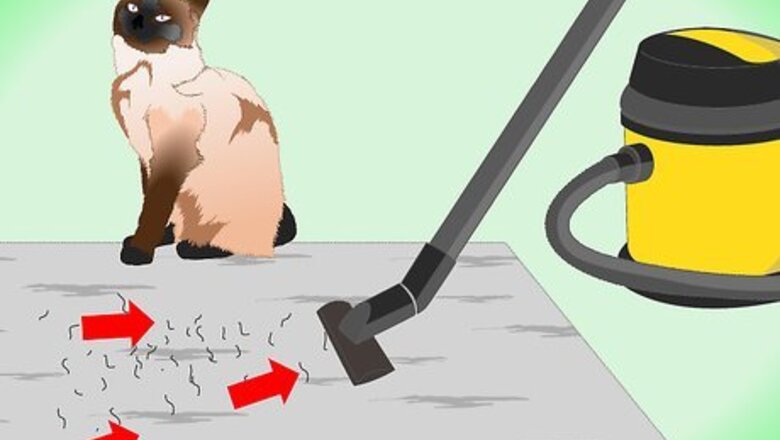
views
Cleaning Up the Floor
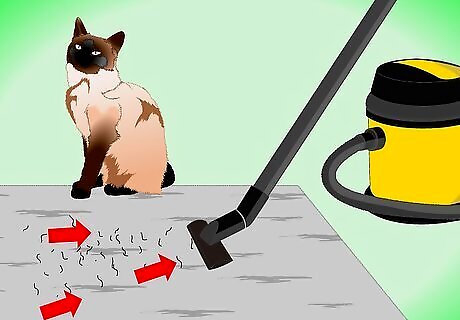
Vacuum every day. Hair accumulates very quickly, and so do the dust and allergy-triggering particles that come with it. Even a home with a single, short-haired cat might need to be vacuumed at least once a day, and a home with more pets will likely need more thorough vacuuming to keep excess hair at bay. When vacuuming your carpet, go over areas twice in different directions to loosen stubborn hairs. Vacuuming regularly also prevents and traps fleas. Robotic room-cleaners can be a good choice for regular vacuuming when you don't have time to go over a carpet every single day. Consider a robot for the rooms your cat frequents.
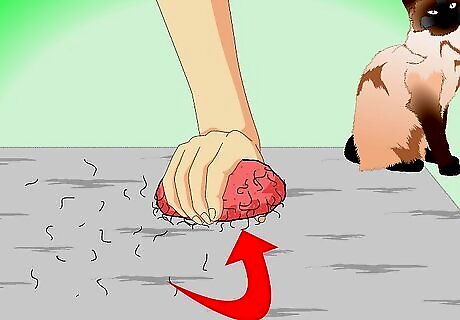
Use a pumice stone on the carpet. Scrape a pumice stone gently along the surface of the carpet. Any hair on the surface will gather right up. Peel the hair off the stone and throw the hair away. Commercial products like FURminator work well, too, but a pumice stone is cheaper and does the job.
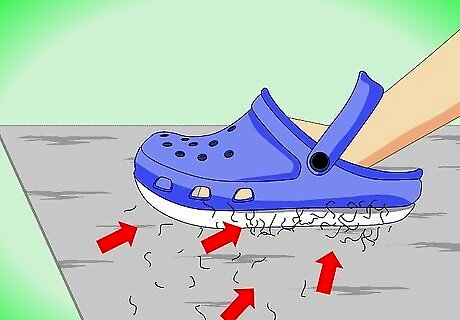
Try using a plastic sandal like a Croc on the carpet. Put a Croc on your hand or foot. Sweep it across the carpet, then rub the bottom of the shoe, and the hair will easily come off in your hand. Try spraying water onto the bottom of the croc, and go back over the area a second time. This should gather the last of the hair.
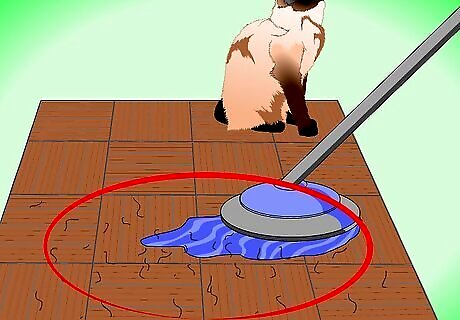
Use dry mops on bare floors. On hardwood, laminate, or vinyl, use an electrostatic or microfiber dry mop to clean up hair. These tend to work better than vacuums on bare flooring. They're sold at home-goods stores. Sweeping helps to keep cat hair under control, but it can also be hard to corral the hair this way. Dry mops tend to trap the hair and dust better than anything else.
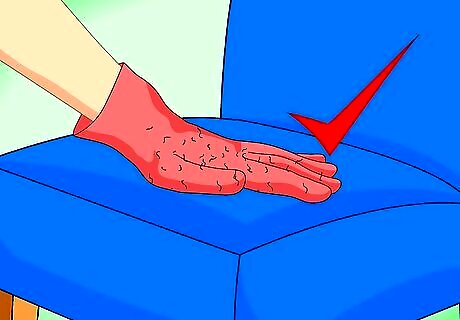
Use wet rubber gloves on furniture. Another way to remove pet hair from fabric or upholstered furniture is to use a damp rubber glove. The yellow kind used for washing dishes is perfect for this purpose. Get the glove slightly wet, then run the gloves over the surface of the fabric. Rinse the hair off and repeat the process as needed. If you don't have gloves, a sponge can work in a pinch.
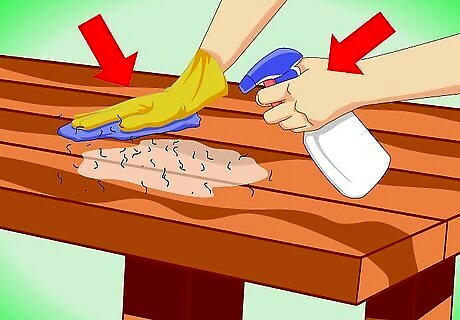
Use a cloth and furniture spray on wooden furniture. A clean, soft cloth can be used on wooden furniture, along with some polish or anti-static spray, to help remove cat hair. The spray will eliminate the static charge in the fur, making it less likely that the fur will re-attach itself to the same surface.
Cleaning Your Clothes and Your Cat
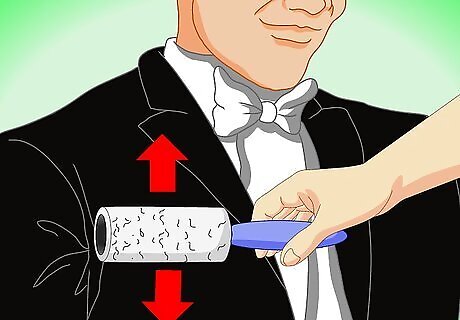
Use a lint roller on your clothes. Keep one of them beside the door so you can remove the hair quickly before you leave for work, school or social occasions. Don't have a lint roller? Use tape! Any sticky tape (transparent, masking, duct, etc.) will pull hair off your clothes. You could even make your own lint roller with a dowel, an empty thread-spool and some sticky tape. Throw your clothes in the dryer for about ten minutes and add a dryer sheet or dryer ball. This technique can help loosen the hair from the clothes. Using fabric softener when you do laundry also helps keep hair from sticking to clothes.
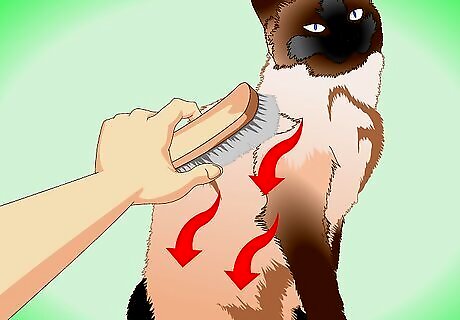
Groom your cat more regularly. Brushing your cat more often will help trap that hair before it has a chance to go skittering across the floor. Use a fine-tooth cat brush and regularly groom your kitty. Cats groom themselves, of course, but many animals enjoy the feeling of being brushed and being held. If your cat doesn't like it at first, hold the animal firmly to your chest with your hand under its belly and pet it. Talk to the cat in a soothing voice.
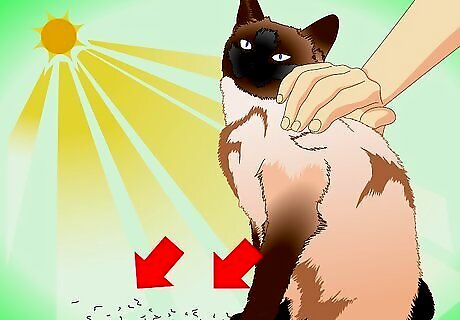
Pay attention to the season. When late spring rolls around, it's important to start grooming your cats. They'll shed at the beginning of summer and at a variety of other times during the year, depending on the breed. Some cats shed constantly and will need to be brushed year-round.
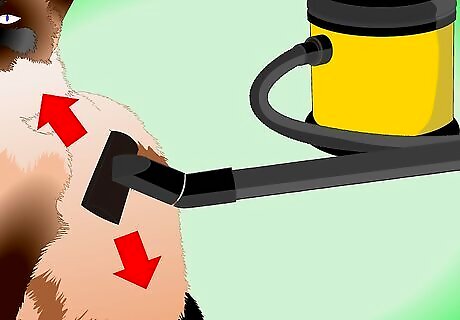
Try gently vacuuming your cat. While it might seem strange, it can be done safely. Try stretching a stocking or thin sock over the vacuum hose and then vacuuming your cat's back very gently if it's relatively comfortable around the vacuum. Because most pets go scattering when the vacuum comes out, this is usually difficult to pull off. The object here is to catch loose hairs before they attach themselves to you and your surroundings.
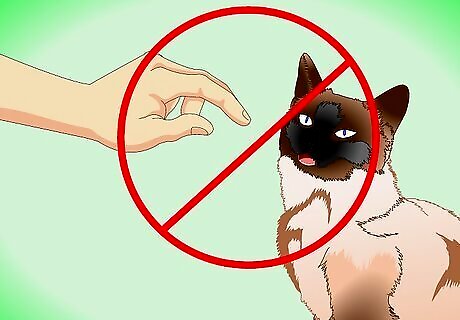
Never punish a cat for shedding. If you find fur on the couch or on your favorite clothes, it might be tempting to push your cat's face into the mess and attempt to "punish" them, but this is the last thing you should do. Instead of learning that it's wrong to rub on or lay on a particular surface, your cat will only learn to fear your presence and may actually shed more as the result of stress. The point is: "punishment" is likely to be lost on a cat. It may serve only to drive a wedge between it and you. You may just have to accept the fact that cats and loose hair go together.


















Comments
0 comment